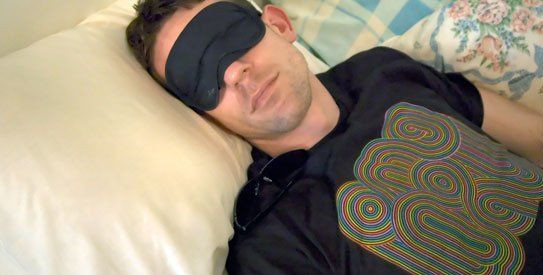Turn Off The Light: Electric Light Disturbs Natural Sleep Patterns

Feeling tired this morning? Blame it on Thomas Edison. The technological marvel of electricity has brightened our lives, perhaps a little too much, wrote Charles Czeisler, Ph.D., professor of sleep medicine at Harvard Medical School, in a Nature article. The use of electric lights at night disturbs natural sleep patterns, or circadian rhythms, and can cause people to consume caffeine to stay awake far later than they should, he said.
The eye not only lets us see, but also serves a set of secondary functions like responding to light and resetting the circadian clock. When the eyes are exposed to artificial light between the hours of sunset and sunrise, that light inhibits neurons that promote sleep and suppresses the release of a hormone called melatonin, which helps put people to sleep, Czeisler said.
The use of artificial light has likely also delayed the so-called second wind people feel in the late afternoon that gives them energy to finish the day. "Before the widespread use of electric light, people probably experienced that second wind in the mid-afternoon, keeping them going until night fell," said Czeisler. "But light exposure after sunset signals 'daytime' to the [brain], shifting the clock later, postponing the second wind and delaying the onset of melatonin secretion. As a result, many people are still checking e-mail, doing homework or watching TV at midnight, with hardly a clue that it is the middle of the solar night."
And as the cost of electricity has gone down, he added, its consumption has gone up at almost the same magnitude, which has in turn increased sleep deficiency. Today, Czeisler wrote, about 30 percent of all employed adults in the U.S. report getting less than six hours of sleep per night, compared to 50 years ago when it was only three percent.
And the rise in sleep deficiency has also contributed to more serious health problems, like obesity, diabetes, heart disease, depression, and stroke. "The obesity boom has triggered a parallel epidemic of obstructive sleep apnea, which disrupts sleep," Czeisler said. "Children become hyperactive rather than sleepy when they don't get enough sleep, and have difficulty focusing attention, so sleep deficiency may be mistaken for attention-deficit hyperactivity disorder (ADHD)." Even driving has become more hazardous as the death toll from sleepy drivers is only second to that from drunk drivers, he added.
Unfortunately, the problem's not getting any better. Worldwide consumption of electricity is increasing, especially as new types of energy-efficient light like light-emitting diodes (LEDs), which are used in products from televisions to Christmas tree lights, make electricity even cheaper.
But solid-state lights like LEDs can also be part of the solution, Czeisler said. The light intensity and color composition of a solid-state light fixture can be easily controlled and modulated. "The adverse effects of night-time light on sleep and circadian rhythms can be reduced by replacing blue-enriched light with red- or orange-enriched white light after sunset."
All in all, Czeisler said, more research needs to be done on how different kinds of artificial light affect sleep patterns and therefore a person's overall health. Such research could enable the development of products that enhance, rather than disrupt, sleep. "It is time to reassess the early assurances of Thomas Edison that using electric light 'is in no way harmful to health, nor does it affect the soundness of sleep,'" Czeisler said.
Source: Czeisler C. Perspective: Casting Light on Sleep Deficiency. Nature. 2013.



























